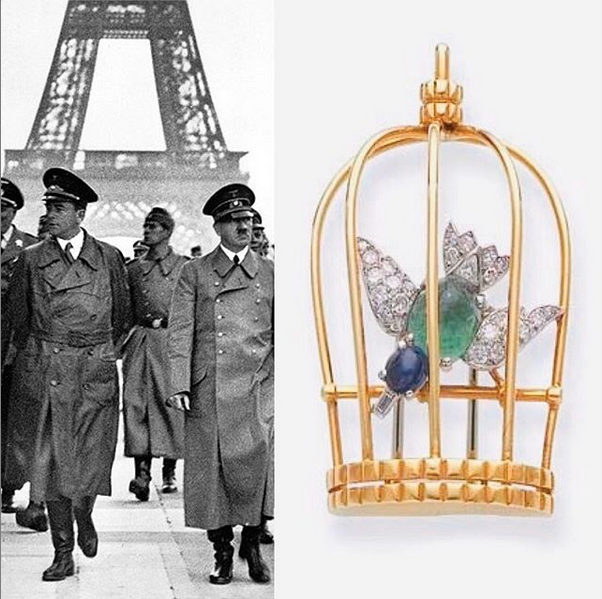Cartier Paris and the Trapped Bird Brooch
As we approach #veday, I have been thinking about what it must have been like approaching the end of WW2 in Paris. Years of occupation had taken its toll on the ‘city of light’: electricity and gas were scarce, water was often cut off and as the head Cartier salesman wrote to his wife "the supply is more and more difficult…we subsist by the black market. For a month we have had very few vegetables or fruit, 0.90 grams of meat per week of poor quality." He was one of the lucky ones: many survived only on rutabagas, a turnip usually fed to cattle. Others sought to stretch out their rations by keeping chickens or rabbits in corners of small apartments (dogs had long since been rounded up to de-mine the country and cats had ended up in stews). But it wasn't just about going without: there was real fear too: Hitler had ordered his armies to destroy Paris if it was invaded by the allies.
Under these conditions, businesses were severely tested but many did stay open - if only to stop themselves being requisitioned by the occupiers: Cartier Paris was not alone in resisting numerous attempts by the Nazis to move the Maison and its employees across the border to Germany. And the enduring Cartier symbol of those times? The now iconic #brooch of a bird trapped in a cage. Designed by Pierre Lemarchand, the #Cartierdesigner renowned for his animal creations (he was also behind many of the famous #pantherjewels for the Duchess of Windsor), the #birdbrooch represented the innocent French men, women, and children imprisoned by the Germans in their own city.
Cartier Paris daringly displayed the brooch in their Rue de la Paix window in 1942. Some accounts suggest that Jeanne Toussaint, as the head of High Jewelry, was taken in for questioning and held for a short time before her friend Chanel managed to have her freed. My quick trawl through the WW2 Parisian police records was unable to confirm this, but either way, displaying the brooch was an incredibly plucky move back then. And today, almost 80 years later, that simple bold little bejewelled creation survives as a reminder of what previous generations lived through.
To be continued... #jewelryhistory
